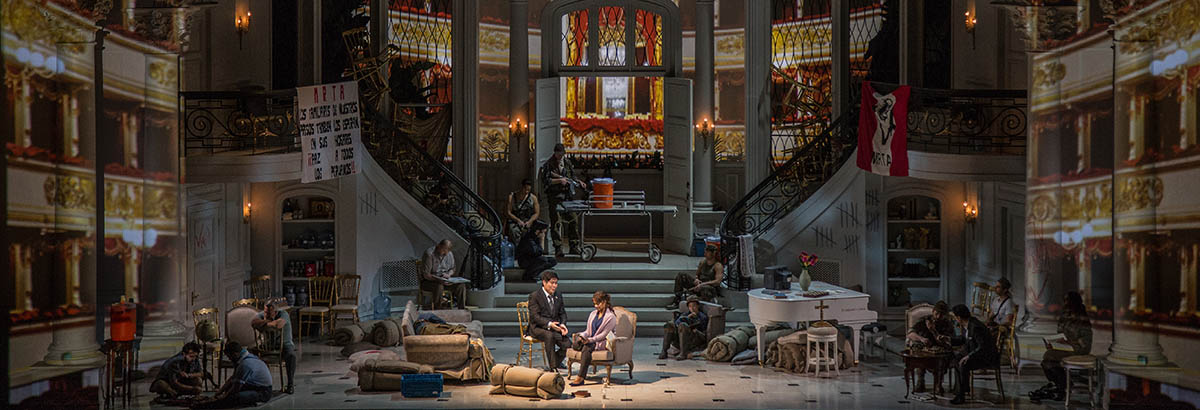April 19, 2019
From Soprano to Bass: Exploring Voice in Opera
Sopranos are divas. Tenors are lovers. A bass is always the bad guy. What are the different voice types? And what roles do they play? In this brand-new series, Lyric's own Anthony Freud, Sir Andrew Davis, and Renée Fleming take you on a guided tour (with plenty of audio examples) of the various voice types in opera.
Mezzos in the Middle
Continuing our ongoing voice part series, this installment focuses on the mezzo-soprano-the voice part that "rarely ends well" in opera, according to Anthony Freud. The mezzo-soprano's role in opera is characterized by versatility. She can do it all, from taking on youthful, energetic pants roles (such as Cherubino in The Marriage of Figaro or Octavian in Der Rosenkavalier) to darker and more dramatic roles that often portray the evil counterpart to the soprano's quintessential good girl.
Lend Me a Tenor
The trio discusses the enduring appeal of the tenor, the voice part in opera who always gets the girl. The tenor must have the balance of virility and vulnerability—with just a touch of danger when he goes for the high note! Some of the characters they discuss include the title role in Massenet's Werther, Prince Calàf in Puccini's Turandot (who sings the famous "Nessun Dorma"), and the title role in Britten's Peter Grimes.
Sublime Sopranos
Lyric's creative consultant Renée Fleming—of course!—takes the lead in this discussion of the soprano in opera from dramatic to coloratura to lyric sopranos. The soprano voice is one of the most recognizable in opera, with many famous arias and indelible images (Brünnhilde in a Viking hat, anyone?) that are immediately recognizable. A soprano is very often the character that the audience most sympathizes with, whether it's as the heroine or the victim. Some of the most complex characters in opera belong to this category, including Cio-Cio San in Puccini's Madama Butterfly, Violetta in Verdi's La traviata, the title role in Dvořák's Rusalka, Bess in The Gershwins' Porgy and Bess, and the Countess in Strauss's Capriccio.
Baritones in-depth
This new exploration of the human voice starts with the baritone. This vocal range might be stuck in the middle of tenor and bass, but the baritone is definitely not a voice that can be easily overlooked. Some of the most famous roles in opera are portrayed by baritones—the ultimate bad boy in Mozart's Don Giovanni, the resourceful fixer Figaro in Rossini's The Barber of Seville, the king of the gods Wotan in Wagner's Ring cycle, and the great title roles in Verdi's Rigoletto, Falstaff, and Simon Boccanegra.
